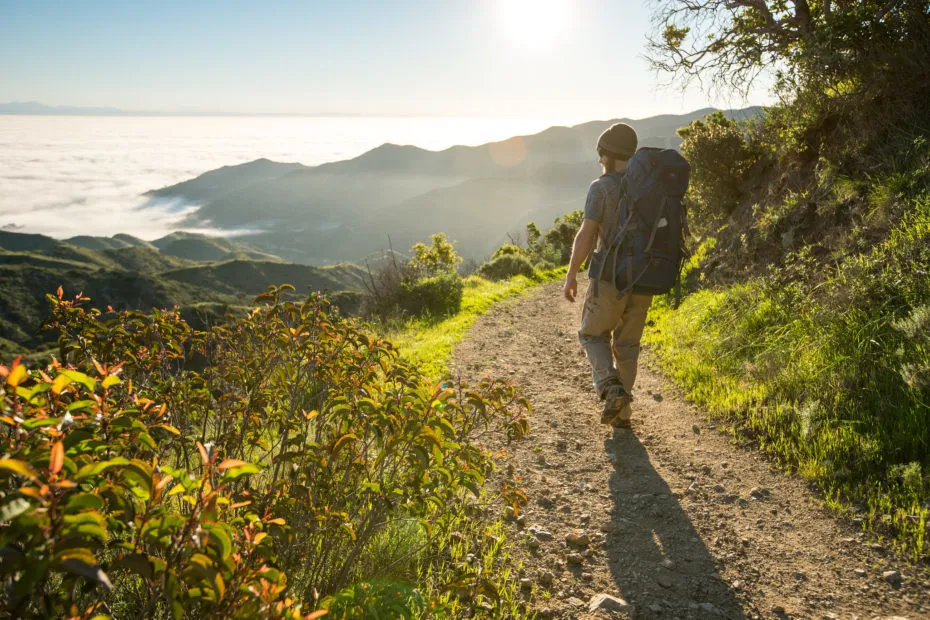Welcome, fellow explorers! As a seasoned traveler with a passion for connecting with places through their landscapes, history, and unique experiences, I can confidently say that tackling the trails is one of the most rewarding ways to discover an island. And when it comes to unforgettable hiking adventures in Southern California, look no further than Catalina Island. This gem off the coast offers a hiking experience unlike any other in the Channel Islands, blending challenging terrain with breathtaking coastal and inland vistas.
Catalina Island isn’t just a resort town; it’s a rugged wilderness waiting to be explored on foot. With over 165 miles of trails and roads, it caters to everyone from casual strollers to serious trekkers. Whether you’re seeking a short loop with stunning ocean views or the ultimate test of endurance on the Trans-Catalina Trail, Catalina Island hikes promise incredible scenery, diverse wildlife encounters, and a deep connection with this unique environment.
Why Catalina Island is a Hiker’s Paradise
What sets Catalina Island hikes apart is the sheer diversity packed into a relatively small area. Within miles, you can traverse rolling hills covered in native chaparral, climb steep ridges offering panoramic views of the Pacific, descend into hidden coves, and walk through the unique inland scrublands. It’s a microcosm of diverse ecosystems, all accessible via its extensive trail network.
The island’s landscapes are dramatic, shaped by volcanic activity and the relentless power of the ocean. Hiking here means constantly being treated to sweeping vistas – vibrant blue waters stretching to the horizon, rugged coastline, and the distant silhouette of the mainland. Every turn brings a new perspective and a renewed sense of awe for the natural beauty of this place.
Planning Your Catalina Island Hikes
Proper planning is crucial for a safe and enjoyable hiking experience on Catalina Island. The island’s interior can be remote, and weather conditions can change rapidly. Before you even pack your boots, you need to secure a hiking permit. These permits are mandatory for your safety and help the Catalina Island Conservancy manage trail use and conservation efforts effectively.
Getting your permit is easy and free. You can obtain one online before your trip or in person at several locations on the island, including the Trailhead visitor center, the Airport in the Sky, and the Two Harbors Visitor Information Center. Having your permit ensures you’re accounted for while exploring the wilderness, providing peace of mind for both you and the Conservancy.
Understanding the trail system is also key. While signs are present, having a reliable map is highly recommended. The Catalina Island Conservancy offers detailed hiking maps for a small fee. These maps provide crucial information on trailheads, mileage, elevation changes, water sources, and points of interest. They are invaluable tools for navigating the island’s expansive trail network.
Beyond permits and maps, consider how you’ll get to the island (ferry is the most common method from ports like Long Beach, San Pedro, and Dana Point) and how you’ll get around once you arrive. Most hikers access trailheads from Avalon or Two Harbors. Transportation between these main hubs is limited, often requiring pre-arranged shuttles or focusing hikes around your arrival/departure point.

Hiker enjoying a scenic Catalina Island trail with ocean views
Exploring Popular Day Hikes and Loops
For those visiting Catalina Island for a day or a weekend, plenty of fantastic day hikes and loops offer a taste of the island’s beauty without committing to a multi-day trek. Many originate near the main port towns, making them easily accessible. These shorter Catalina Island hikes are perfect for families, casual hikers, or those looking to combine hiking with other island activities.

Near Avalon, popular options include the Hermit Gulch Trail Loop, which offers stunning views back over the town and the harbor, and trails leading towards the Wrigley Memorial & Botanic Garden, providing gentler slopes and beautiful flora. These trails showcase the coastal charm and accessible nature areas close to the main town.
Out towards Two Harbors on the West End, you’ll find trails like the Ballast Point Trail or the Banning House Road trails, offering spectacular views of both sides of the island’s narrow neck. These areas provide a slightly more rugged feel than those directly adjacent to Avalon, with opportunities to spot wildlife and enjoy secluded beaches.
Discover the Best – Where to Go on Vacation in Florida
Your Ultimate Guide – what to eat in destin florida
Discover Fun Things to Do in LA Today
Many loop trails crisscross the island’s interior, offering varied distances and difficulty levels. These loops allow hikers to experience different landscapes without backtracking, providing a diverse hiking experience within a single outing. Always check the map and trail conditions before heading out on any loop trail, especially those venturing into the less populated interior.
Conquering the Trans-Catalina Trail
The ultimate challenge for serious hikers is the Trans-Catalina Trail (TCT). This iconic 38.5-mile (approximately 61.9 km) trek traverses the entire island, from Avalon on the east end to Starlight Beach (near Parson’s Landing) on the west, looping back to finish in Two Harbors. It’s a challenging multi-day adventure that showcases the full spectrum of Catalina Island’s landscapes.
Completing the TCT typically takes 3 to 5 days, depending on your pace and planned stops. The trail features significant elevation changes, remote stretches, and stunning ocean views. It winds through grassy hillsides, rocky canyons, and along dramatic coastal bluffs. Highlights include passing by the Airport in the Sky, seeing the bison roam, and experiencing the quiet beauty of the remote west end.
Careful planning is essential for the Trans-Catalina Trail. This includes reserving campsites well in advance (they fill up quickly), planning for water refills (sources are limited and must be confirmed), and being prepared for varied weather conditions. It’s a true backpacking experience requiring self-sufficiency and readiness for the elements.
Hiking the TCT is more than just a physical challenge; it’s an immersive journey into the heart of Catalina’s wild side. It provides a unique perspective on the island’s conservation efforts and allows hikers to disconnect from the hustle and bustle of daily life, fully embracing the solitude and natural beauty of the Channel Islands.
 Adventurous hiker exploring one of the many challenging Catalina Island hikes
Adventurous hiker exploring one of the many challenging Catalina Island hikes
Safety Tips for Catalina Island Hikes
Safety should be your top priority when embarking on Catalina Island hikes. The island’s terrain, weather, and wildlife present unique considerations. Always carry plenty of water, more than you think you’ll need, especially during warmer months. Dehydration is a significant risk on exposed trails.
Sun protection is also vital. Wear sunscreen, a hat, and sunglasses, and consider lightweight, long-sleeved clothing. The sun can be intense, reflecting off the ocean and trails. Layering is advisable as temperatures can fluctuate between coastal areas and the interior, and throughout the day.
Be aware of the island’s wildlife, particularly the famous Catalina Island bison. While generally docile, they are wild animals and should be observed from a safe distance. Never approach or feed them. Be mindful of your surroundings, especially when hiking around blind corners or over hills where bison might be grazing.
Trail conditions can vary. Some sections are well-maintained, while others can be rocky, steep, or overgrown. Wear sturdy hiking boots with good ankle support. Inform someone of your hiking plans – your route, estimated return time, and who you are with. Cell service can be spotty in the island’s interior, so don’t rely solely on your phone for emergencies.
Carry a basic first-aid kit, a whistle, a flashlight or headlamp (even for day hikes), and emergency supplies like snacks and a water filter/purification tablets. Respect the Leave No Trace principles: pack out everything you pack in, stay on marked trails, and minimize your impact on the environment.
Beyond the Trail: Catalina’s Culture and Nature
While Catalina Island hikes are the main draw for many, exploring the trails offers a chance to connect with the island’s rich history and ongoing conservation efforts. Learn about the indigenous Tongva people who first inhabited the island, the era of Hollywood stars flocking to Avalon, and the crucial work of the Catalina Island Conservancy in preserving the island’s unique ecosystem.
Look out for endemic plant and animal species found nowhere else in the world. The Conservancy actively protects these species and their habitats, and hiking the trails is a great way to see their work firsthand. Consider visiting the Conservancy’s nature center or participating in a guided nature tour to deepen your understanding of the island’s ecological significance.
Incorporating hiking into your Catalina Island visit allows you to experience the island beyond its charming towns and beaches. It’s an opportunity for adventure, challenge, and a profound appreciation for this remarkable natural treasure just a short ferry ride from the mainland.
Frequently Asked Questions about Catalina Island Hikes
Q: Do I need a permit for Catalina Island Hikes?
A: Yes, a free hiking permit is required for all recreational hiking on the island’s trails and roads managed by the Catalina Island Conservancy.
Q: How long is the Trans-Catalina Trail?
A: The Trans-Catalina Trail is approximately 38.5 miles (61.9 km) long.
Q: Are there bison on the hiking trails?
A: Yes, American Bison roam freely throughout the island’s interior and can often be seen near or on the hiking trails. Maintain a safe distance.
Q: Where can I get a map of the Catalina Island hikes?
A: Detailed hiking maps can be purchased at the Trailhead visitor center, Airport in the Sky, Wrigley Memorial & Botanic Garden, or Two Harbor Visitor Services. Digital maps may also be available.
Q: What is the best time of year for hiking on Catalina Island?
A: Spring and Fall generally offer the most pleasant hiking weather, with mild temperatures and less chance of extreme heat. Wildflowers bloom in spring, adding to the scenery. Summer can be hot, and winter can bring rain.
In conclusion, exploring Catalina Island through its extensive network of trails is an adventure not to be missed. From easy coastal strolls to challenging multi-day treks, Catalina Island hikes offer something for every level of adventurer, promising stunning scenery, unique wildlife, and a deep connection with the island’s wild heart. Lace up your boots, get your permit, and hit the trails!
